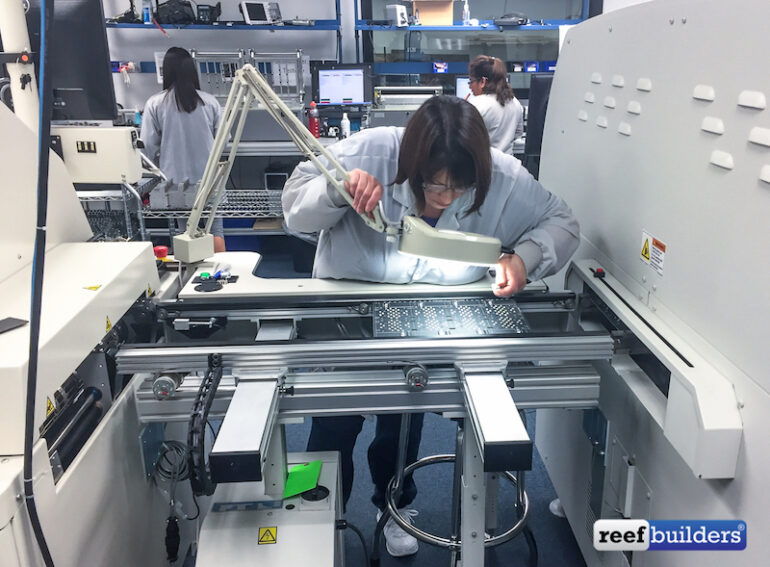Over the years we have been fortunate in seeing innovation after innovation come to the hobby. Initially, most of these innovations came from Europe, which due to their being in the hobby longer undoubtedly accounted for their innovations in equipment. I still recall visiting Europe in the 1990’s and seeing protein skimmers the size of kitchen appliances, t-5 lighting and one of my favorites GFO for reducing phosphate there but not here at that time. These are all things which we now take for granted. Fortunately, about 14 years ago a US company, Ecotech Marine brought out it’s first innovative product to market: the Vortech pump.
To be honest, at the time the Vortech pump was more of a curiosity than anything else for some of us, as it’s main selling point was that it took the heat that was generated by most internal powerheads and kept it outside of the tank, where the motor was located. And at least for me, this pump was noisy and kind of unattractive, hanging as it did on the outside wall of a tank.
However, as with most things technical, I really did not grasp where Ecotech was going and what they were hoping to do over time. I really did not worry about the heat being generated by a powerhead as after all I was lighting my tank with multiple 400-wattt metal halides so an extra degree or two from a powerhead was not much of a concern to me as the chiller I was using could surely handle it. So what was the big deal about this company? And more to the point would this company fail like so many had in this industry, since at the time it was really just a one trick pony?
Over the last few years I have gotten to visit Pat and Jay and Tim at Ecotech, and talk with them at many of the shows to see firsthand what they are working on and what they are trying to accomplish. And along with my road trip partner Sanjay, have been allowed access to just about everything at their headquarters in Pennsylvania and have gotten to ask the questions that are on our minds and that I also expect are on the minds of many hobbyists.
Because of this access and seeing what is going on I thought it was to write an article discussing this company that would hopefully be of interest to you. I admit that I use their equipment, and like the other equipment I use and talk about, I like it. Is it perfect, no, but as I discuss below I think they do genuinely try to make it good equipment for the hobby.
Having said that, I should also note that up until the last few years I was not a fan of the Vortech pumps. I say that, as in my experience the Ecosmart Driver on these pumps was somewhat problematic for me. That is, it was noisy, needed cleaned frequently and did not last as long as some of the other powerheads I was using and it was more expensive. However, since these pumps were switched over to the QuietDrive driver, it has been a completely different story for me.
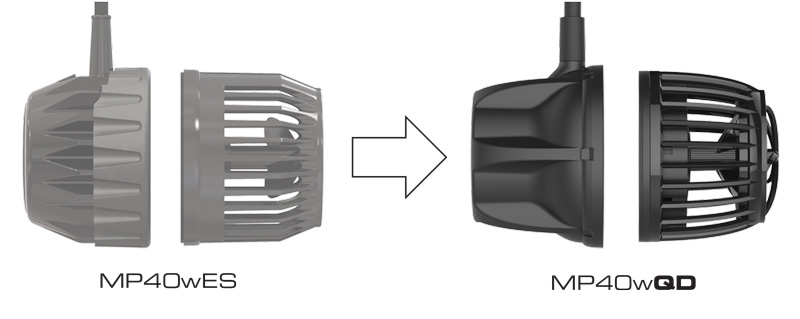
So far, these pumps since the switch have been reliable, and not noisy at all. But truth be told they still need cleaned, but that is a reflection on me and my tanks and not on the pump. Having said that, this old pump was successful as it was what put Ecotech on the map and kept them in business during their early years. And because of this success it would have been easy for Ecotech to just keep putting these pumps out and not listen to complainers like me, who kept asking for something better. So part of the reason that I appreciate this company is because they listened to my and other’s complaints and came up with a better design and ultimately a better pump.
While the original Vortech pumps were good at the one thing they were designed to do: move water, the new pumps along with their programming controllers make these pumps integral to all of my tanks. I use them because I am a big advocate of strong water movement and also that it be as random as possible. In this regard, these pumps now not only come in a variety of sizes to match the demands of different sized tanks, but they also can now be programmed to produce water movement within the tank in just about any fashion imaginable.
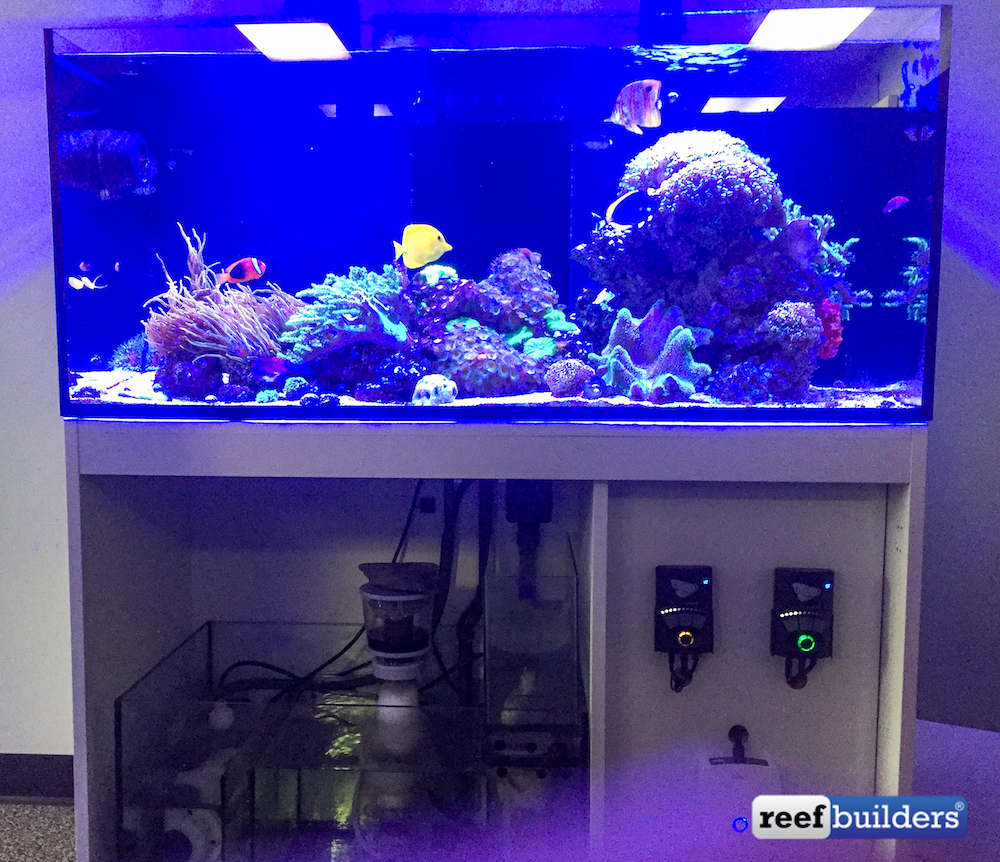
That is, they can be programmed to do far more than just move water in a jet like most powerheads do. While they can do this, and can move a lot of water, they can also be programmed to produce waves, pulses and gyres. They can also be easily shut down during feeding or slowed at night to allow corals to feed more readily and they can even communicate to one another so that the flow within a tank can mimic the randomness of a reef.
Just having these pumps in and of itself would be nice for a company and would no doubt make it successful in this hobby, but Ecotech has also come out with a couple of other products, that at least for me, changed my enjoyment of the hobby significantly. Having been visiting Sanjay and his incredible tanks for the last 25 years, determining the best lighting for our tanks was pretty much a constant discussion throughout the years. While we both used halides, we knew that their heat production, relatively short life span and variability did not make them the ultimate lighting source for our tanks.
Because of this, we discussed t-5s, plasma lighting, natural sunlight and just about anything else we could think of to light our tanks and played with some of them. Even as little as a few years ago we were both of the opinion that LEDs were probably at least ten years away from being a viable option for growing sps corals like we had in our tanks. We felt this was the case due to their lacking intensity and their cost at the time. However, about four and half years ago we saw a couple of tanks housing sps corals that indeed were having success.
As a result, we both decided to try LEDs on our tanks. I initially went with AIs, due to their having fixtures that produced blue light, which I prefer, while Sanjay went with the Radions, that produced a whiter light. Fortunately, we both had success with these lighting choices and after moving slowly with implementing them exclusively on our tanks we both were convinced that LED lighting had finally come of age.
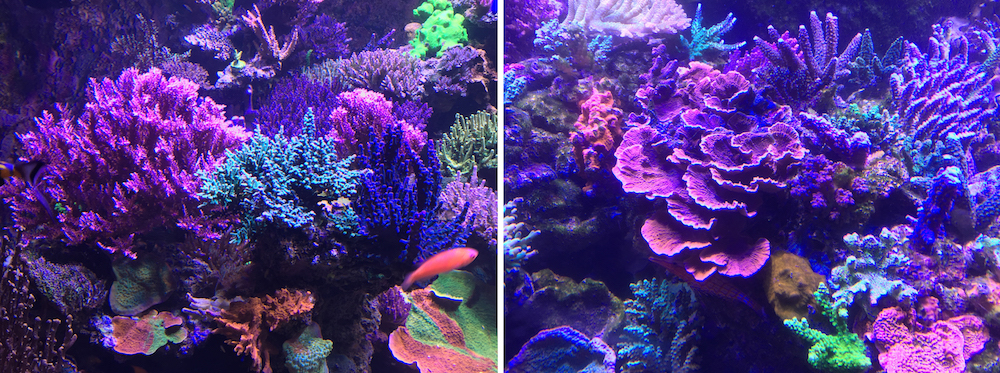
The success we had translated into our sps corals not only being healthy, but also growing and in some instances growing at least as well as they did under halides. I will admit that there were some hiccups at first. Some of the corals bleached due to our not acclimating them properly, while others grew, but not at the rate or with the coloration that they did under halides. While we were doing our experiments we passed along what we were seeing to the folks at Ecotech and unlike some companies out there, they actually listened to our comments and those of others as well as doing their own experiments and over time made adjustments accordingly.
Once I had some success on my small tank, I switched over to the Radions on my 300-gallon sps tank and up until last Fall we both ran our tanks under the second generation of lights. Over time we both noticed some of the same things with these lights, corals like Acropora millepora grew significantly more slowly or not at all under these lights than they did under halides, and Acropora spathulata lost its color quickly under them as well. However, many other corals were more colorful under these lights than they were under halides, no doubt due to these lights being able to be tailored to maximize coloration.
Over the two plus years we passed this information on to Ecotech and let them know exactly what we were seeing and how our tanks were responding as we manipulated these lights. Sanjay ran his lights so that a significantly higher PAR was produced while I ran mine with the goal of maximizing color so the PAR was significantly less. Having said that, the corals in each tank were still growing robustly and Sanjay’s corals still showed wonderful bright coloration.
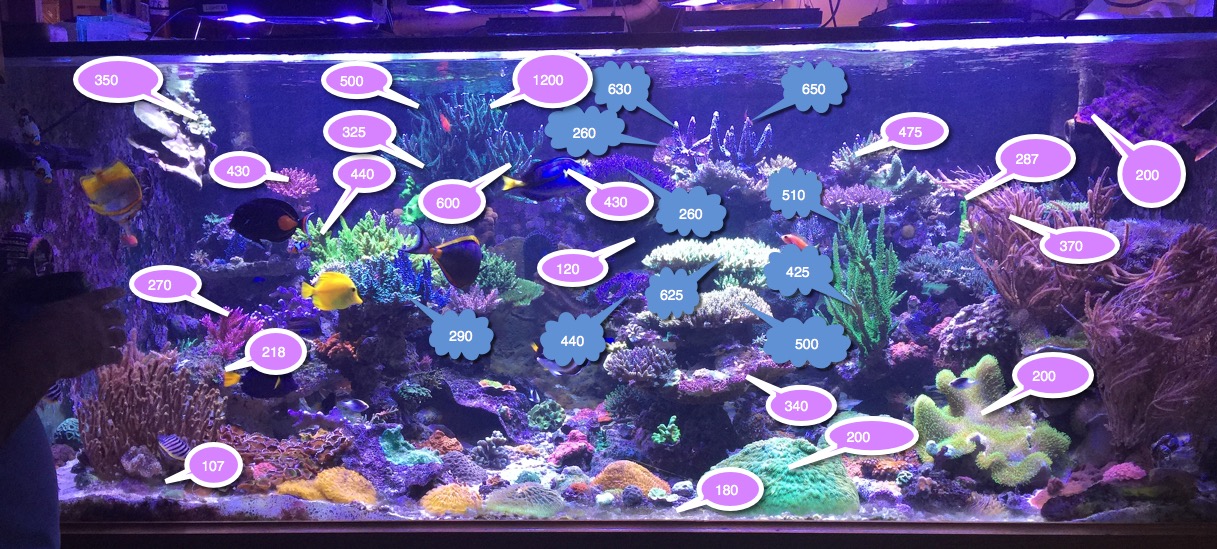
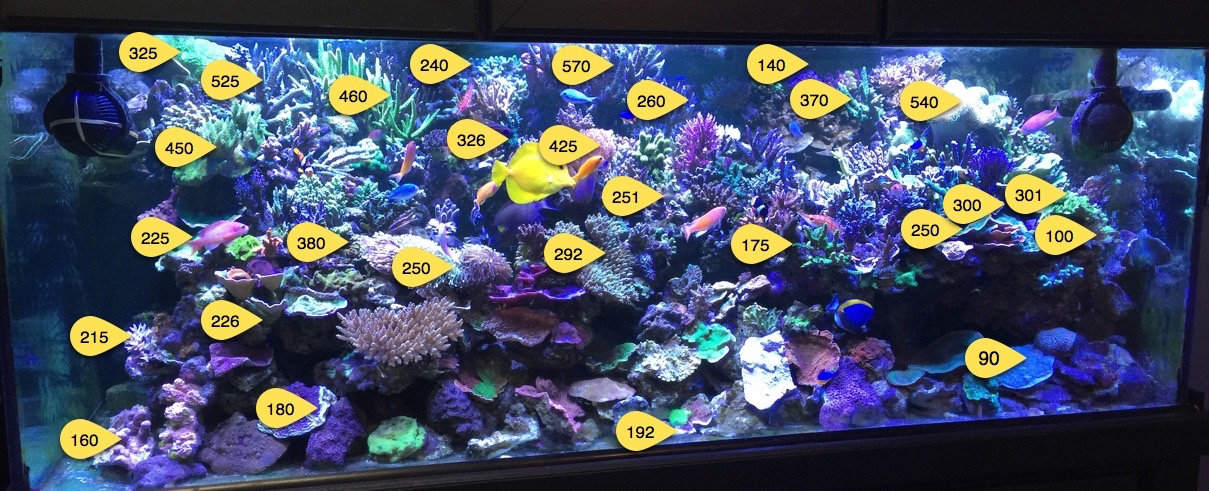
As I said, we passed along what we were seeing to Ecotech and Pat and Tim and others came to visit both of our tanks to take measurements and see how each of our tanks were responding. In addition, they had several tanks of their own on which they experimented to see how different lighting templates affected their corals. In fact, they even set up their own testing facility called Ecotech lab, so that they could evaluate what their lights and other equipment could do first hand. Unlike some companies in this hobby that claim that they have done extensive testing, Ecotech spent the money and took the time to actually see what their lights and other equipment were doing. And how the corals they kept responded.
Their willingness to listen to us as well as run experiments to verify things is one of the reasons I admire them and their products. Working in an industry that by its nature has to put the patient/customer first like I do, I appreciate that they actually listen to their customers and hobbyists like Sanjay and myself. I say this as it has been my experience that when some companies get big they some times get arrogant and no longer listen to their customers.
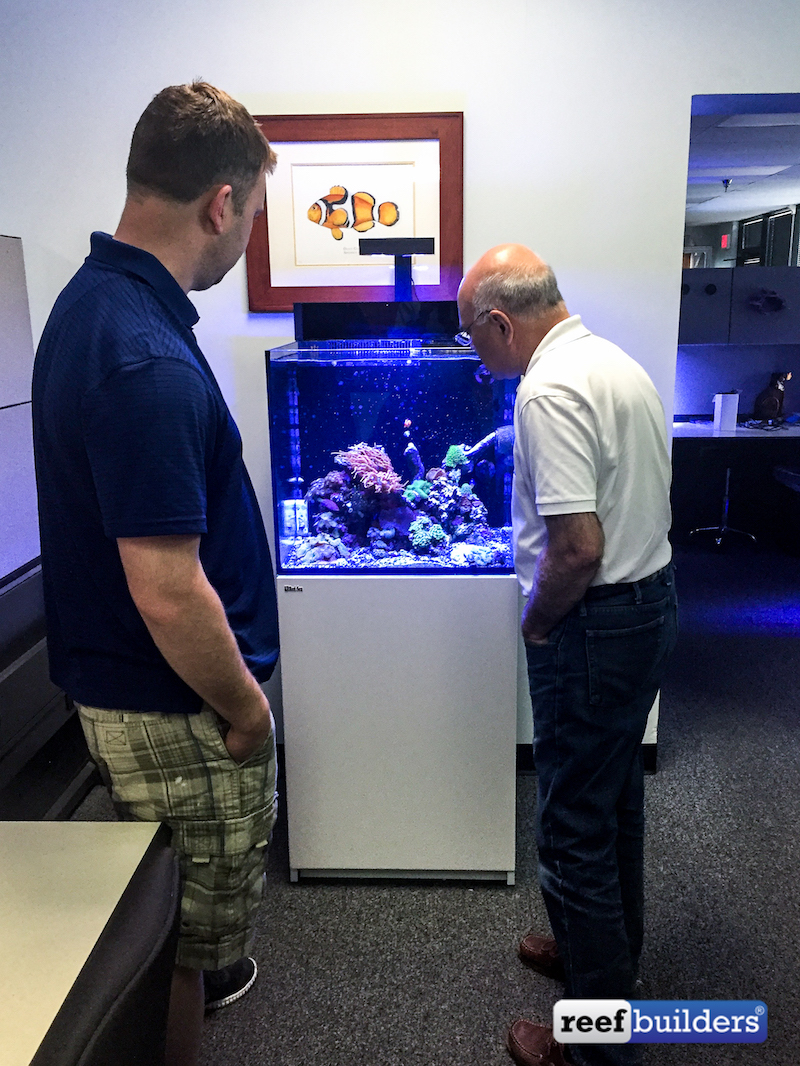
That is probably why I use so many of their products. Over the years I have used and tried at least a half dozen different LED lights and probably twice as many powerheads and Sanjay has done the same. They all worked and I had at least some success with all of them. But now that I have reduced how much experimenting I am doing with these pieces of equipment, these are the lights I am using on five of my six tanks.
Their listening to their customers is what I believe led them to the development of their 4th generation light. For Sanjay and I it was a no brainer to switch to these lights seeing that they had the spectrum that we were both looking for along with a much broader spread with a significantly reduced hot spot as well as better cooling.
Ecotech took a risk and upset some customers by not allowing these lights to be upgraded from their old models, as they had done in the past, but the reality is these were completely new lights. For me, soon after the switch I noticed that the corners of my tank no longer looked dark, and when Sanjay switched he needed fewer lights. In addition, and not insignificantly we both noticed that after switching some corals like the milleporas and spathulatas suddenly started growing at rates similar to what they had done under halides.
In addition, while Sanjay has always had amazing growth in the corals in his tanks, after switching his lighting over to this new generation the growth in many of his corals was significantly faster than it was under the earlier generation of lights. Since my daughter now attends Penn State I have gotten to see Sanjay’s tank on a more regular basis. As result, I have seen and photographed this increased growth first hand and the growth of his corals, especially many of the frags he has just recently introduced has been impressive.
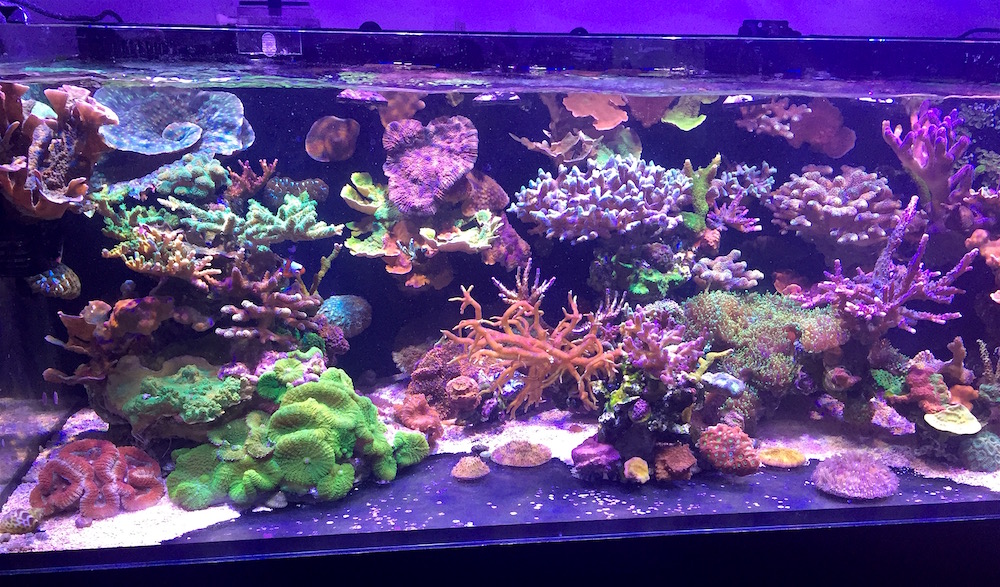
While my discussion of their products, which probably everybody already knows about, only touched the surface of why Ecotech is different, there are also several other reasons that I think make it so hobbyist friendly. With products of such a technical nature, having a good customer service department is crucial for long-term success. In this regard, it has been my experience that their customer service department is one of if not the best in the industry.
Having as much of their equipment as I do and with always tinkering with it some issues with the equipment have occurred from time to time. Fortunately, any time I have had a problem they have worked to solve it with me. More impressive to me though is that even if I just left a brief message of the issue they always called me back, unlike some of the other technology companies in the hobby that I have dealt with that either never called back or said the problem was mine they could not solve it.
I also really appreciate the sense of urgency they have shown, because as most of us know when there is an issue with a piece of equipment in our tanks, it is usually a life and death matter for our fish and corals. I think part of the reason they share this sense of urgency is that virtually everyone in customer service, as well as many of the engineers, sales people and owners, all have tanks of their own, and many of them reef tanks. What is interesting to me, is that this was not the case a couple of years ago. However, during our recent visits, it has become quite evident that just about everyone that I have interacted with has been bitten by the reef bug.

Some of these tanks are large, others small, but everyone seems to have a tank of their own that they take care of and that reflects their personality. In my opinion this is a really good thing for a reef company to promote as I think that having a tank of your own really gives them greater empathy to deal with other hobbyists and understand their problems and why we are all frantic when a problem arises and we need to solve it. Similarly, I think that seeing that many of the upper echelon people there also have tanks of their own helps them better understand what they need to improve and what us fellow hobbyists want. I have visited a few other manufacturing companies in the hobby and to date only at Ecotech have that many of their employees with tanks of their own.
One other thing which I also found unique and interesting at Ecotech is that several of the engineers and others have labs or workshops at their homes where they work on ideas or work out bugs or run equipment through its paces. As we all know this hobby is addicting, so it was interesting to see that this addiction extends for some of the people who make and design our equipment.
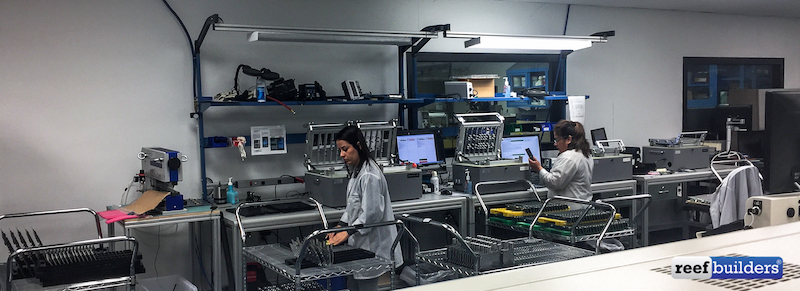
Because of this level of commitment, some would say obsessiveness, I saw firsthand some of the things that they are planning for the future. Unfortunately, I can’t really share these at this time for proprietary reasons, but I am excited with what I have seen. While to some it may not be up to the breakthrough status of the Vortech or Vectra pumps or the Radion lights, but from what I have seen some of these things will make us more successful and the hobby easier once these products come out.
As I have written about Ecotech I tried to write about what is going on there and the people more than about the products. To some I’m sure this article will seem like a commercial for them, but that was not my intent and as I noted at first I was not particularly enamored with their products. I only write about products I like and believe in, if I do not like something I do not write about it, I just leave it alone and wait for that company to leave the hobby as so many have already done. And the main reason I like their products is that unlike some companies they actually seem to listen to us hobbyists, which in itself is unique not just for this hobby but for corporate America in general.
Innovation has been one of the hallmarks of this hobby and companies like Ecotech have been at the forefront of some of these breakthroughs. Some may complain that their equipment is too expensive, but as my cellar full of junk indicates, in this hobby more than most, you get what you pay for.
Fortunately for us, the good folks at Ecotech take the profits they make and keep investing it in bringing us new and better products. Hopefully this will continue and next time we visit there will be even more reef tanks for us to enjoy and for the staff to keep so that they continue to feel what we do and be empathetic to our needs.


